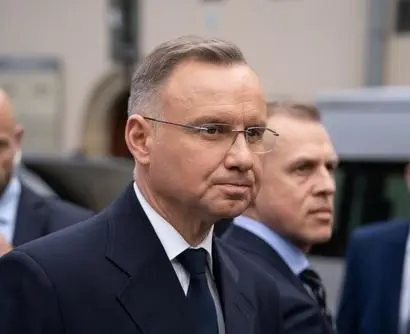Abstract: In the rapidly changing landscape of urban economies in India, there is a growing focus on fostering nuanced civic engagement to enhance transparency, accountability, and representation. This shift in public administration emphasises collaborative solution-building and the creation of more inclusive and sustainable policy frameworks. Against the backdrop of a rapidly growing national economy, marked by a significant improvement in the delivery of public services such as healthcare, education, and power supply, there is a need to rework the overall context of inclusive development.
Problem statement: How could enhancing urban governance in India take form by promoting civic engagement and inclusive policy frameworks?
So what?: Efforts should be made by policymakers, administrators, and community leaders to establish institutional support and collaborative approaches for civic engagement in urban governance, fostering inclusive and sustainable policy frameworks in India.

The Dynamics of Urban Economies in India
The prospect of nuanced civic engagement in democratic processes is important in spearheading transparency, accountability, representation, and strengthening contemporary administrative discourse’s overall socio-political and economic character. While the global context of public administration experiences a paradigm shift from traditional redressal of grievances to collaborative solution building, considerable emphasis is placed on effective streamlining policy frameworks, making them more inclusive and sustainable.
Urban Governance and Community Engagement
Sherry Arnstein’s 1969 ladder of citizen participation envisages institutional, legislative and political support at varied levels of governance in the pursuit of a “state-wise strategy” through an amicable power and responsibility distribution network. Since immemorial, urban participation in India has been fraught with several archaic laws and low state support, instrumental in the lack of incentivising development works. Contrary to what one might assume, it doesn’t always stem from limited budgetary allocations to address on-ground issues.
As per the Indian think tank PRAI, getting the public involved requires three stages to be followed:
- Preliminary Engagement: This part entails creating awareness through campaigns and advertisements. For detailed public engagements, options of informal house visits or even formal consultations with specific groups could be explored;
- Secondary Engagement: Mostly ward-level consultations at nodal centres for stakeholder engagement; and
- City Development Strategy Workshop (CDS): Updates the people on ongoing policy endeavours, coupled with active stakeholder and representative input.
Aspects of revamping labour organisations, in the larger pursuit of infrastructural viability, leverage cost-effective innovations and skill addition mechanisms under the aegis of research initiatives. The broadening of the ambit of Public-Private Partnerships (PPPs) and participatory budgeting through external sources of funding in RWA (Resident Welfare Associations) / CSOs (Civil Society Organisations), might help bridge the gap between Urban Local Bodies (ULBs) and the citizenry.
Democratisation of Participatory Urbanisation
Under the SUMA (Sustainable Urban Management Accords) of the Government of Karnataka, 2020, steps were taken to introduce a sustainable transport systems to achieve specific goals and action plans by 2030. As per the DULT (Directorate of Urban Land Transport) Report of 2013, “a direct funding of INR 50 lakhs ($ 60,000) was shelled out directly, with an initial timeline of 1 year, with active consonance of technical partners, without interference by local bodies”.
India has recorded steady growth despite domestic and global challenges, including a COVID-19 pandemic followed by an oil price shock. Many of the ideas, such as the strengthening of Pradhan Mantri Kausha, Vikas Yojana, Make in India, and Pradhan Mantri Mudra Yojana, that has motivated Indian policymakers are also gaining acceptance across the World. India’s indigenous development strategy has not been static but has evolved and developed with experience and the changing national and international environment. Therefore, It is an appropriate moment to attempt to formalise this development model. The challenge, however, pertains to the monetisation of assets and the lack of a platform for cross-learning for the holistic treatment of problems.
In the recent context, there has largely been a focus on (1) Market economics, (2) Empowerment, and (3) Pragmatism. In the Indic market economy, private initiative and competition drive growth and productive employment. Businesses play a crucial role in the nation’s economic landscape by engaging in producing and selling goods and services and creating and generating jobs. This economic ecosystem encompasses diverse business forms, ranging from companies and micro, small, and medium enterprises to self-employed individuals, traditional and modern enterprises, and domestic and foreign businesses. Within this dynamic economic context, companies of varying scales, including micro, small, and medium enterprises, are vital to the business ecosystem.
The second cardinal aspect concerning the inclusive and participatory nature of the overall discourse revolves around “The Antyodaya Welfarism” or the government’s initiative to commemorate key historical events and leaders aims to forge connections among citizens and integrate these celebrations into their daily lives. Prime Minister Narendra Modi’s “Mann Ki Baat” radio program seeks to personally engage with every Indian, fostering mutual empathy and understanding across diverse backgrounds and lifestyles. Through this, social compassion can be cultivated among citizens.
The third important prospect of pragmatism as more of a product of the two aforementioned aspects suggests that the current government instinctively prioritises experience and evidence over theory and ideology. This flows directly from an “Indic Market Economy”, giving rise to prudent welfare schemes.
Evidence must be based on the experience of credible, trustworthy interlocutors. Finding out which policies work and which don’t, and what is more effective or efficient in achieving goals is almost necessary for reform. The result is pragmatic policy formulation, which gives weight to theory, formal evidence and an iterative approach in policymaking, with feedback loops to improve policies. PM Modi is very eclectic about the source of the evidence but alert to selection bias arising from ideology or self-serving theory.
An important element in urban inclusion is tactical urbanism through improving public spaces, using low-cost, temporary and experimental interventions as reflected in the twin examples of Magarpatta and Auroville. With higher degrees of community intervention and fundamental township changes through positive changes, much like the land assembly instance in Rourkela, Orissa accentuates community engagement to a great extent.
Moreover, emerging Tier-1 and Tier-2 townships of Jamnagar, Chandigarh and Bhubaneswar, driven by “economics of agglomeration”, orchestrated by state or private organisations through developmental results and physical improvements in the environment, have served as context-specific experiences of participatory urbanisation and strategies of deliberative democracy. In the wake of globalisation and industrialisation, these indigenous models have not only been independent of several socio-cultural limitations; they also serve as corrective mechanical imitations for leveraging urban growth at a rate of 80-85 per cent with greater internal funding.
Moving Forward
While a calibrated approach is in place to effectively structure community consultation and nuanced public engagement, the policy process has grappled with implementation issues. Given the lack of common popular consensus concerning community development projects, alongside a lack of a combination of subsidies and incentives for greater personnel participation and identification of strategic locations, plenty remains undone. More importantly, it could be covered up in a shorter period.
Inclusive development and community consultation through empowerment, awareness and collective training programmes could only lead to productive outcomes with the right balance of active governance and higher civic engagement.
Ainesh Dey is a sophomore at St Xavier’s College, Kolkata. As an avid learner, he has participated and won laurels in several debates and creative writing endeavours, nationally and internationally. The views contained in this article are the author’s alone.





